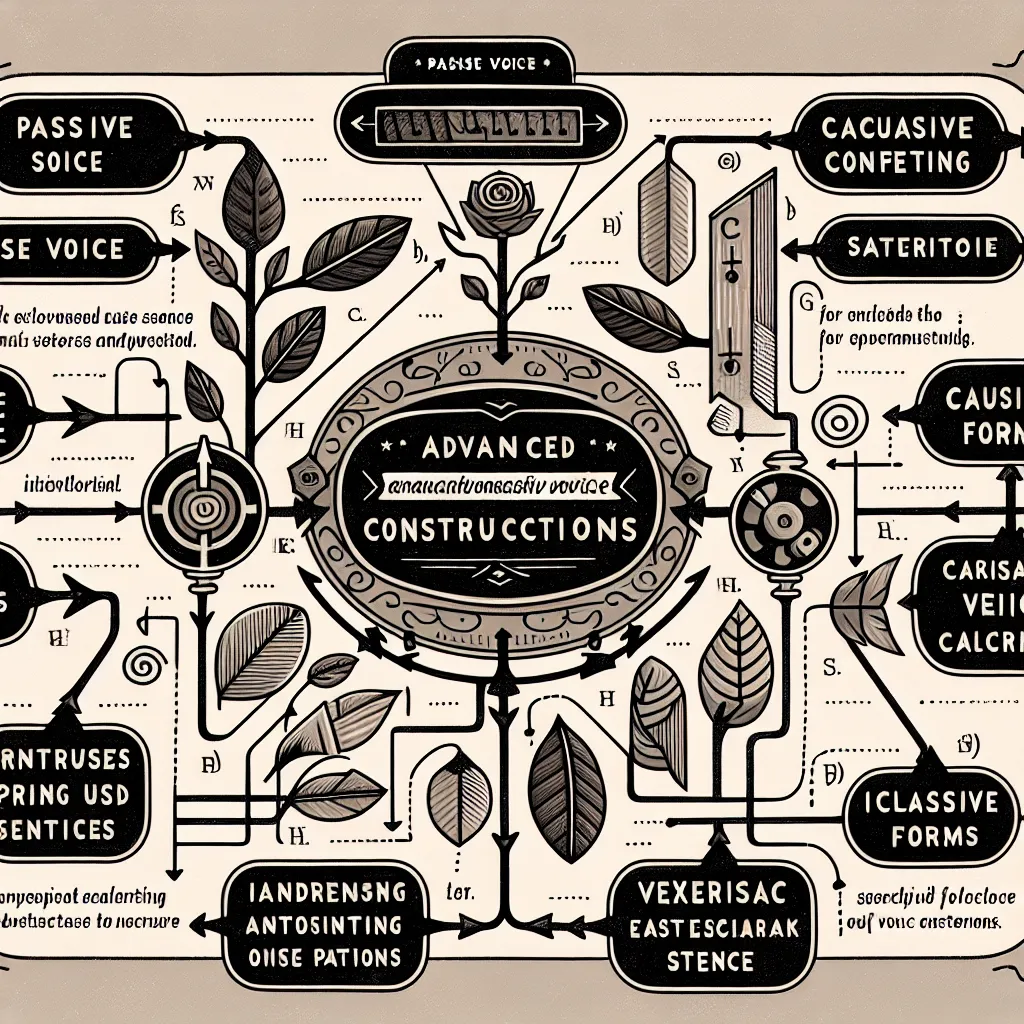Are you looking to elevate your English writing and speaking skills? Mastering advanced sentence formations is key to expressing complex ideas with clarity and sophistication. This guide will walk you through various techniques to enhance your sentence structures, making your English more fluent and impressive.
Understanding the Importance of Advanced Sentence Formations
Advanced sentence formations are crucial for effective communication in English. They allow you to convey nuanced meanings, create emphasis, and vary your writing style. Whether you’re preparing for the IELTS exam, writing academic papers, or aiming to improve your professional communication, mastering these structures will significantly enhance your language proficiency.
 Advanced English sentence structures
Advanced English sentence structures
Types of Advanced Sentence Formations
1. Complex Sentences
Complex sentences combine an independent clause with one or more dependent clauses. They’re essential for showing relationships between ideas.
Example: “Although it was raining heavily, we decided to go for a walk.”
In this sentence, “Although it was raining heavily” is the dependent clause, and “we decided to go for a walk” is the independent clause.
2. Compound-Complex Sentences
These sentences contain multiple independent clauses and at least one dependent clause, allowing for the expression of several related ideas.
Example: “When I arrived at the station, the train had already left, but I managed to catch the next one.”
Here, we have two independent clauses (“the train had already left” and “I managed to catch the next one”) and one dependent clause (“When I arrived at the station”).
3. Inverted Sentences
Inverted sentences change the typical subject-verb order for emphasis or stylistic effect.
Example: “Rarely have I seen such a beautiful sunset.”
This structure emphasizes the rarity of the experience more than the standard “I have rarely seen such a beautiful sunset.”
4. Cleft Sentences
Cleft sentences split a single clause into two parts to emphasize a particular element.
Example: “It was the challenging exam that motivated her to study harder.”
This structure emphasizes “the challenging exam” more than a simple sentence like “The challenging exam motivated her to study harder.”
Strategies for Mastering Advanced Sentence Formations
1. Read Extensively
Exposure to various writing styles is crucial. Read a wide range of materials, including academic journals, literary works, and quality news articles. Pay attention to how sentences are constructed and try to emulate these structures in your own writing.
2. Practice Sentence Combining
Take simple sentences and combine them using different techniques. For instance:
Simple sentences: “The weather was cold. We went for a walk. We enjoyed the fresh air.”
Combined: “Despite the cold weather, we went for a walk and enjoyed the fresh air.”
3. Use Subordinating Conjunctions
Incorporate subordinating conjunctions like “although,” “because,” “while,” and “unless” to create complex sentences.
Example: “While I enjoy coffee, I prefer tea in the evening.”
4. Experiment with Sentence Order
Try moving different parts of your sentences around to see how it affects emphasis and flow.
Original: “She completed her thesis after months of hard work.”
Inverted: “After months of hard work, she completed her thesis.”
5. Incorporate Transitional Phrases
Use transitional phrases to connect ideas smoothly and create more sophisticated sentence structures.
Example: “On the other hand, despite the challenges, the team persevered.”
 English sentence structure practice
English sentence structure practice
Common Pitfalls to Avoid
-
Overcomplication: While advanced structures are useful, clarity should always be your primary goal. Don’t use complex formations just for the sake of it.
-
Run-on Sentences: Be careful not to create overly long sentences that are difficult to follow.
-
Misuse of Conjunctions: Ensure you’re using the right conjunctions to express the intended relationship between ideas.
-
Lack of Variety: Don’t overuse one type of sentence structure. Mix different types for a more engaging writing style.
Practical Exercises to Improve Your Skills
-
Sentence Transformation: Take simple sentences and rewrite them using different advanced structures.
-
Analysis Exercise: Analyze passages from well-written texts, identifying the types of sentence structures used.
-
Writing Prompts: Practice writing short paragraphs focusing on using specific advanced sentence formations.
-
Peer Review: Exchange writing with peers and provide feedback on each other’s use of sentence structures.
Conclusion
Mastering advanced sentence formations is a journey that requires practice and patience. By incorporating these techniques into your writing and speaking, you’ll significantly enhance your English proficiency. Remember, the goal is not just to use complex structures, but to use them effectively to communicate your ideas with clarity and impact.
For more insights on improving your English skills, check out our guides on using advanced syntactic structures in reports and mastering English through storytelling. Keep practicing, and you’ll see your English proficiency soar to new heights!




